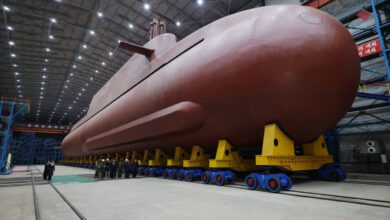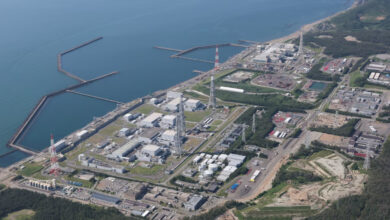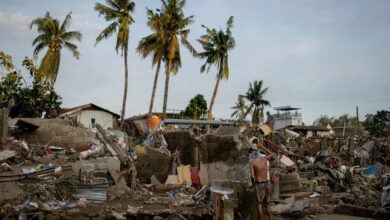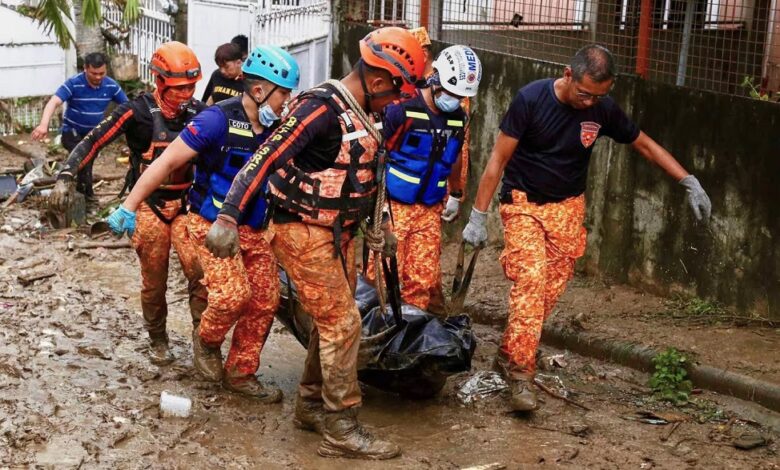
In Talisay city, survivors sift through the destruction, hoping to salvage what little remains. Among them was Eilene Oken, 38, who walked through what used to be her neighbourhood, only to find her home completely destroyed.
“We worked and saved for this for years, then in an instant, it was all gone,” she said, her voice breaking. But Oken said she remains grateful because her family, including her two daughters, were unharmed.
Scenes of devastation emerged in Cebu, a major tourist hub, as floodwaters receded, revealing destroyed homes, overturned vehicles, and widespread debris.
Among the 66 fatalities were six military personnel whose helicopter crashed in Agusan del Sur on the island of Mindanao during a humanitarian mission. The disaster agency reported 26 people missing, and 10 injured.
The devastation from Kalmaegi, locally named Tino, comes just over a month after a magnitude 6.9 earthquake struck northern Cebu, killing dozens and displacing thousands.
Kalmaegi, the 20th storm to hit the Philippines, slightly intensified as it was crossing the South China Sea on its way to Vietnam where preparations are underway ahead of the typhoon’s expected landfall on Friday.
Kalmaegi, which has weakened after making landfall early Tuesday, is forecast to regain strength while over the South China Sea, state weather PAGASA said in its latest bulletin.
More than 200,000 people were evacuated across the Visayas region, including parts of southern Luzon and northern Mindanao, ahead of a storm that submerged homes and caused widespread flooding and power outages.
In September, Super Typhoon Ragasa swept across northern Luzon, forcing schools and government offices to shut down as it brought fierce winds and torrential rain.
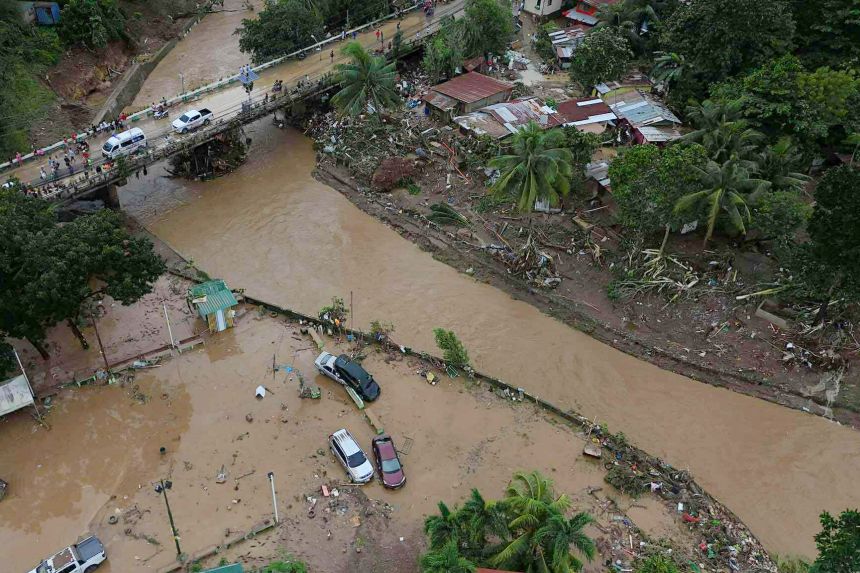
Floods in Cebu City had subsided late on Tuesday but power was still out in many places and telecommunications services were intermittent, a Reuters journalist in Cebu said.
Photos and videos from the Philippine Red Cross showed rescue workers wading through knee-deep floodwaters in Cebu City, using boats to reach stranded residents. In Liloan town, on the northern outskirts of the city, homes were submerged, with only rooftops and top floors visible.
Similar scenes from other parts of Cebu City, with vehicles and streets under water, circulated on social media.
State weather agency PAGASA said the combination of Kalmaegi and a shear line had brought heavy rains and strong winds across the Visayas and nearby areas.
More than 180 flights to and from the affected areas were canceled on Tuesday, while those at sea were advised to head to the nearest safe harbor immediately and to stay in port.
PAGASA had earlier warned of a high risk of “life-threatening and damaging storm surges” that could reach more than 3 meters (9.84 ft) high along coastal and low-lying communities in the central Philippines, including parts of Mindanao.
The Vietnamese government also said on Tuesday that it was preparing for the worst-case scenario as it braced for the impact of Kalmaegi.
The typhoon is forecast to make landfall on Thursday night in Vietnam’s central regions, which have already suffered heavy floods that killed at least 40 people and left six others missing over the past week.
“This is a very strong typhoon, which continues to strengthen after entering the East Sea,” the government said in a statement, referring to the South China Sea.
Kalmaegi comes as the Philippines, which is hit by an average of 20 tropical storms each year, recovers from a run of disasters including earthquakes and severe weather events in recent months.

